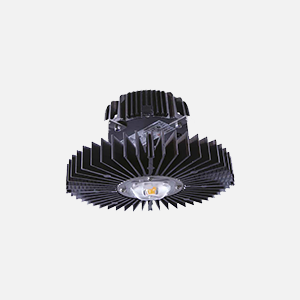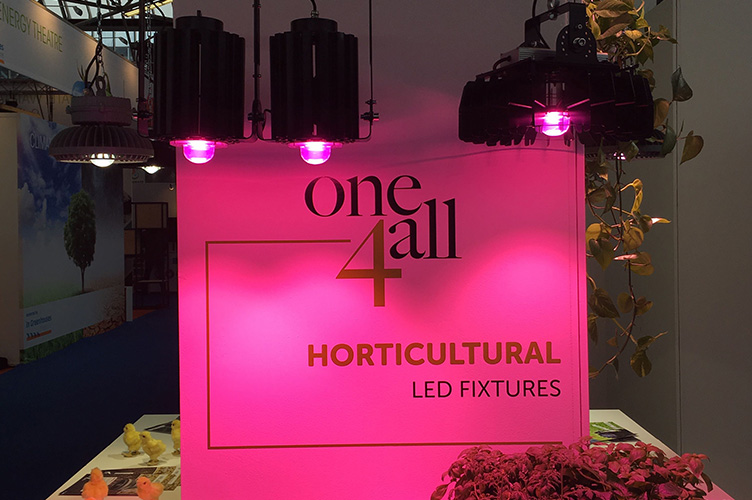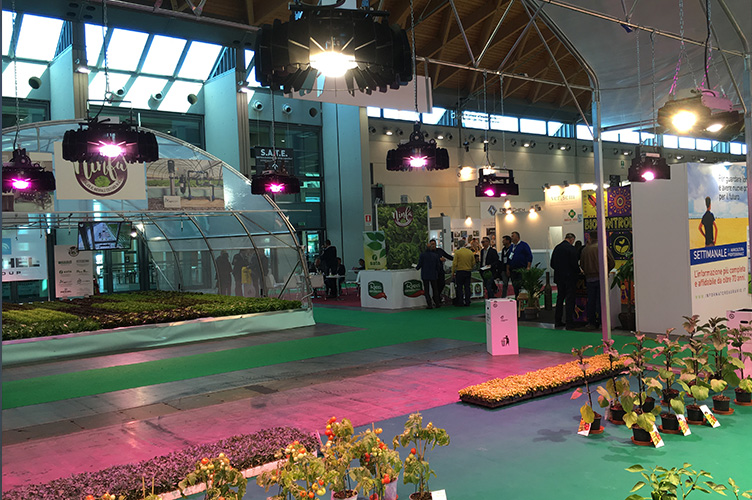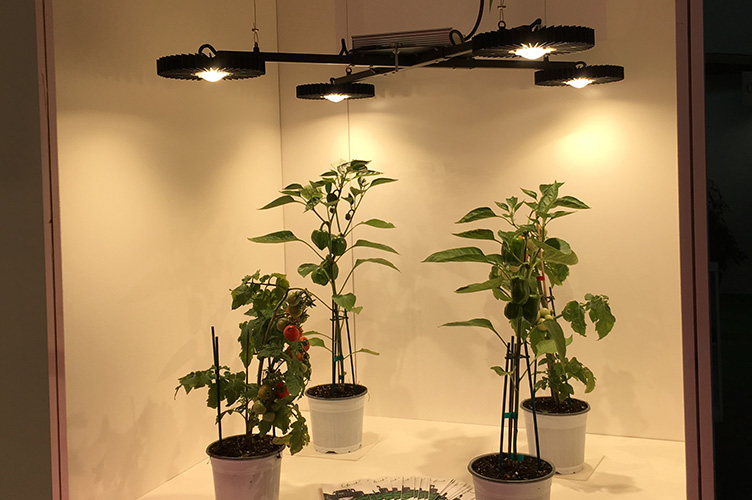
LED lighting for
HORTICULTURE
Sustainable agriculture is one of the major topical issues especially with regard to food supply in the future. Given the current availability of arable land and continuing to produce with today's farming techniques, it will be unthinkable to meet the growing demand for food. Light is fundamental for most living beings: plants, like living organisms, use light to develop the photosynthesis process. The quantity of light, its quality, in the sense of the spectral composition of the light, in addition to the duration of exposure, have an effect on the properties of the plant during the various stages of growth and development.
Lighting is therefore a fundamental variable in horticulture and the LED is the natural source that creates perfect spectra for each type of cultivation. Indoor cultivation, in a greenhouse or in a closed building with controllable artificial lighting is now a very widespread practice. Our LED projectors use COB LEDS which have dedicated light spectra, which stimulate photosynthesis and provide the light required during the growth, development and flowering of the plant. Our LED solutions can in fact integrate or replace natural lighting.
Proper exposure to light allows you to speed up harvests and have a healthy and luxuriant production all year round.
Proper exposure to light allows you to speed up harvests and have a healthy and luxuriant production all year round.
We do not simply offer lighting fixtures, but consultancy aimed at finding the best production yield and the highest quality of cultivation. We analyze and evaluate all the data on the characteristics of the greenhouse, or indoor, we collect information on the type of cultivation and the productive and economic objectives of the grower and recommend the correct configuration of the lighting system to achieve the best balance between cost and performance.
LED LIGHTING FOR
HORTICULTURE
Sustainable agriculture is one of the major topical issues especially with regard to food supply in the future. Given the current availability of arable land and continuing to produce with today's farming techniques, it will be unthinkable to meet the growing demand for food. Light is fundamental for most living beings: plants, like living organisms, use light to develop the photosynthesis process. The quantity of light, its quality, in the sense of the spectral composition of the light, in addition to the duration of exposure, have an effect on the properties of the plant during the various stages of growth and development.
Lighting is therefore a fundamental variable in horticulture and the LED is the natural source that creates perfect spectra for each type of cultivation. Indoor cultivation, in a greenhouse or in a closed building with controllable artificial lighting is now a very widespread practice. Our LED projectors use COB LEDS which have dedicated light spectra, which stimulate photosynthesis and provide the light required during the growth, development and flowering of the plant. Our LED solutions can in fact integrate or replace natural lighting.
Proper exposure to light allows you to speed up harvests and have a healthy and luxuriant production all year round.
Proper exposure to light allows you to speed up harvests and have a healthy and luxuriant production all year round.
We do not simply offer lighting fixtures, but consultancy aimed at finding the best production yield and the highest quality of cultivation. We analyze and evaluate all the data on the characteristics of the greenhouse, or indoor, we collect information on the type of cultivation and the productive and economic objectives of the grower and recommend the correct configuration of the lighting system to achieve the best balance between cost and performance.
Key points
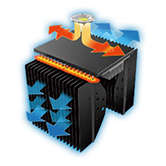
Cooling system
The heat transfer rate of the thermal superconductor is one hundred to one thousand times better than metal. This ensures that the heat generated by the LED is immediately transferred and radiated into the air. Keeps the working LED chip in good condition and increases the life of the Cob.
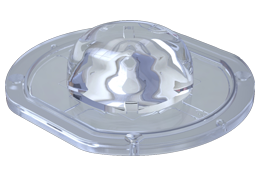
Silicone lenses
- High thermal resistance. Range between -40º C and 200º C
- Anti-yellowing effect
- High resistance to chemical phenomena and wear
- Excellent transparency
- High efficiency
- Low light absorption
- No birefringing effects
- Anti-yellowing effect
- High resistance to chemical phenomena and wear
- Excellent transparency
- High efficiency
- Low light absorption
- No birefringing effects
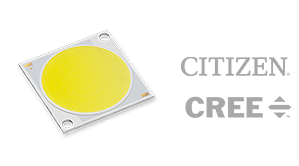
COB Leds
Xtream 300 HC
Passive heat-pipe cooling.
Low energy absorption and lower heat emission compared to traditional lamps.
Low energy absorption and lower heat emission compared to traditional lamps.
Supreme 350 HC
Passive heat-pipe cooling.
Wide range of high efficiency silicone lenses.
Wide range of high efficiency silicone lenses.
Supreme 500 HC
Passive heat-pipe cooling
Wide range of high efficiency silicone lenses.
Wide range of high efficiency silicone lenses.
Supreme 700 HC
Passive heat-pipe cooling.
Wide range of high efficiency silicone lenses.
Wide range of high efficiency silicone lenses.
Glammy
Passive heat-pipe cooling. Low energy absorption and lower heat emission compared to traditional lamps.
Smart 250 HC
Passive heat-pipe cooling.
Wide range of high efficiency silicone lenses.
You may also like
The Asian bug, Halyomorpha halys, is an insect from East Asia, but since early 2000s has started to spread in the USA and Central Europe, from 2012 you can find it in Italy too. In autumn these insects come together for wintering creating annoying infestations; it can take place in homes, warehouses, woodsheds and shelters of various types.
After winter, around April-May, insects move on the vegetation causing direct and indirect damages to the affected species, causing depreciation and loss of their marketing requirements.
The Asian bug is a polyphagous species that attacks, causing huge damages, to various products of both garden and orchard. It is possible to prevent these damages either through the careful monitoring of the diffusion of the populations of bedbugs, or through mass catches; both activities are carried out using traps with aggregation pheromones.
After winter, around April-May, insects move on the vegetation causing direct and indirect damages to the affected species, causing depreciation and loss of their marketing requirements.
The Asian bug is a polyphagous species that attacks, causing huge damages, to various products of both garden and orchard. It is possible to prevent these damages either through the careful monitoring of the diffusion of the populations of bedbugs, or through mass catches; both activities are carried out using traps with aggregation pheromones.
Dropophila Suzukii is a little insect from South Asia. In 2008 it was saw in the United States and then in other European countries, including Italy. Dropophila Suzukii female has a strong ovipositor, she cuts the epidermis of the ripening fruits and inserts the eggs directly into the fruit pulp.Initially the affected fruits show both a depressed and a soft area and subsequently dissolve rapidly due to the feeding activity of the larvae inside them. Small fruits (blueberry, raspberry, blackberry, strawberry) and cherry are the most affected, but also apricot, peach, nectarine, plum and some vine varieties are not free from risks.


